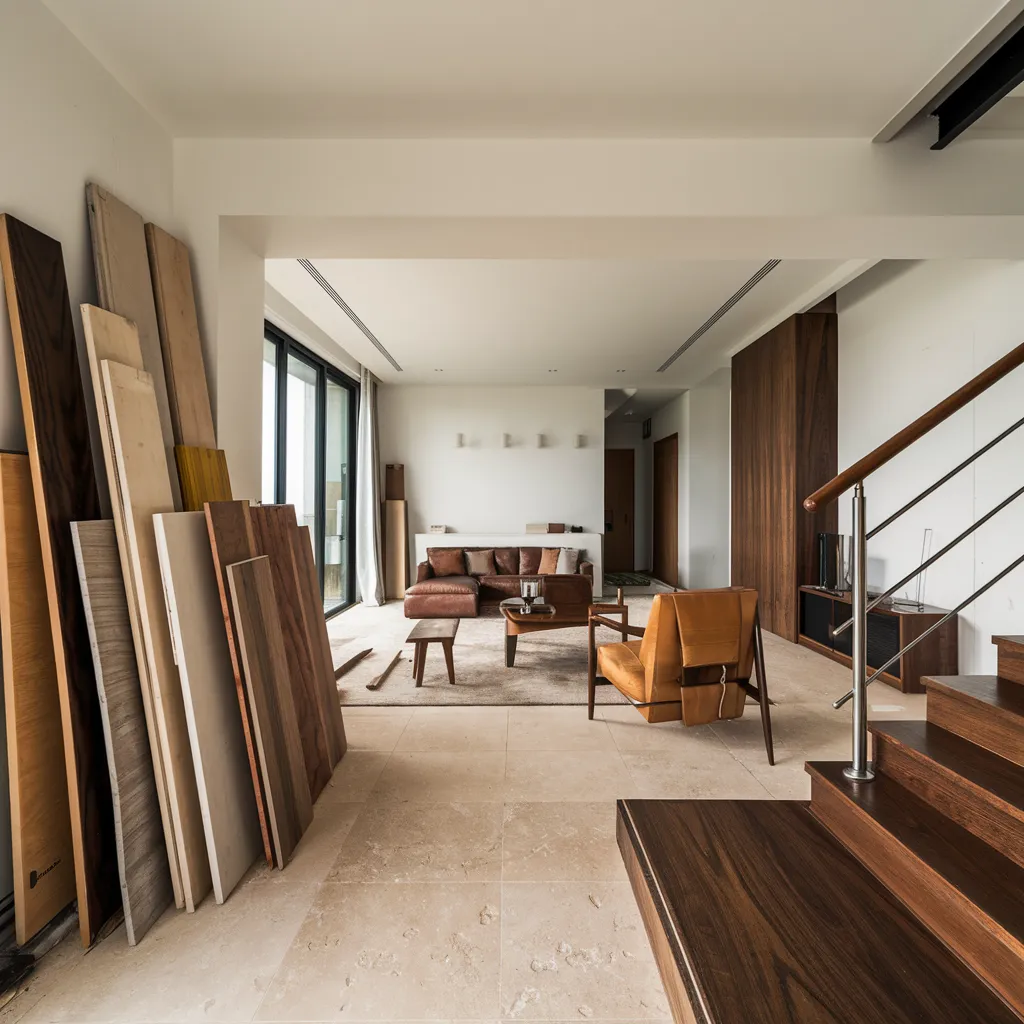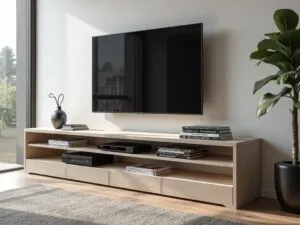Unleash the power of wood mixing to transform your living spaces into harmonious sanctuaries that captivate the senses. This unconventional approach is taking the design world by storm, and you won’t believe the stunning results.
Unveiling the Secrets of Stylish Wood Mixing
In the realm of interior design, a bold new trend is emerging – the art of mixing wood tones. Once considered a taboo, this daring technique is now embraced by visionary designers who understand the profound impact it can have on a space’s ambiance. By skillfully blending various shades and textures of wood, they create depth, contrast, and an undeniable sense of sophistication that leaves onlookers spellbound.

This empty room bathed in natural light features vertical wood paneling and matching flooring in a honey finish. Its consistent wood tone provides a clean canvas, contrasting with the article’s call to layer wood hues for dimension—yet it also shows the power of starting with a unified base.
Crafting a Harmonious Wooden Melody
Imagine a symphony where each instrument contributes its unique timbre, yet the ensemble produces a mesmerizing harmony. This is the essence of wood mixing – a delicate balance of contrasting elements that come together in perfect unison. From the warm, rich tones of mahogany to the cool, sleek hues of maple, every piece plays a crucial role in crafting an enchanting visual melody that resonates with the soul.

A sunlit dining space embraces a modern organic style, with an oval walnut table, curved wood chairs, and subtle plant accents. The tonal cohesion between furniture and trim illustrates the article’s principle of anchoring a mix with a dominant wood tone to create visual flow.
Mastering the Art of Wooden Counterpoint
At the heart of this captivating trend lies the concept of counterpoint – the artful interplay of contrasting tones and textures. Just as a skilled composer weaves intricate melodies, a master interior designer orchestrates a symphony of wood, juxtaposing light and dark, smooth and rough, to create a visual feast that tantalizes the senses. The key lies in striking the perfect balance, where each element complements the others, resulting in a harmonious whole that transcends the sum of its parts.

Featuring Scandinavian influences, this living room harmonizes light oak floors with a medium-tone walnut coffee table and soft gray concrete walls. The textural and tonal contrast reinforces the article’s message: mixing wood tones adds character while maintaining balance through neutral bases and organic textures.
Unlocking the Rhythm of Refined Wood Fusion
Yet, wood mixing is more than just a haphazard combination of disparate elements. It is a meticulously choreographed dance, where each piece moves in sync with the others, creating a rhythm that captivates the eye and soothes the spirit. From the warm embrace of a rich walnut dining table to the cool elegance of a pale oak sideboard, every element contributes to the overall rhythm, weaving a tapestry of textures and tones that invites you to linger and savor the experience.

This serene bedroom combines medium walnut furniture with soft beige walls and linens, embodying minimalist style with a cozy, natural feel. The subtle variation in wood tones—highlighted by matching nightstands and headboard—echoes the article’s advice on using tonal similarity to unify different finishes.
Composing a Symphony of Elegant Wood Tones
As you embark on this journey of wood mixing, remember that the true artistry lies in your ability to compose a symphony of elegant wood tones. Embrace the challenge of blending seemingly disparate elements into a cohesive whole, and revel in the power of creating spaces that not only captivate the eye but also stir the soul. Unleash your inner maestro, and let the world marvel at the harmonious melodies you craft with the timeless beauty of wood.

A sleek home office showcases a warm mid-century modern aesthetic with rich walnut shelving, a minimalist desk, and matte black accents. The interplay of dark and light wood tones, paired with neutral decor, supports the article’s theme of confidently blending wood finishes for depth and sophistication.



